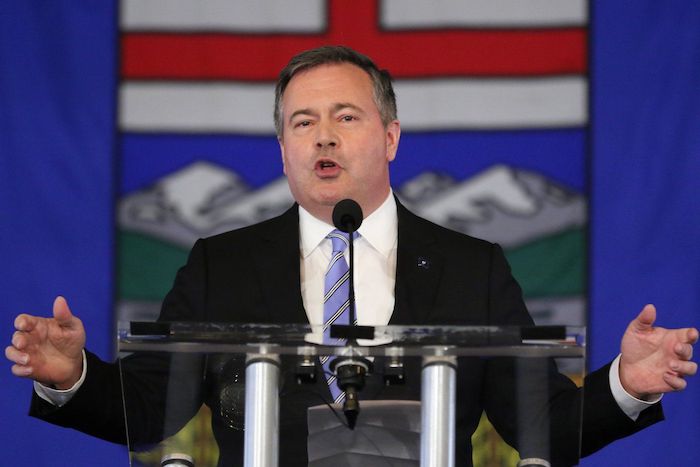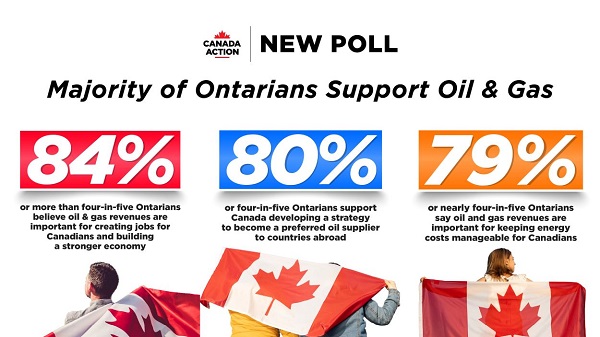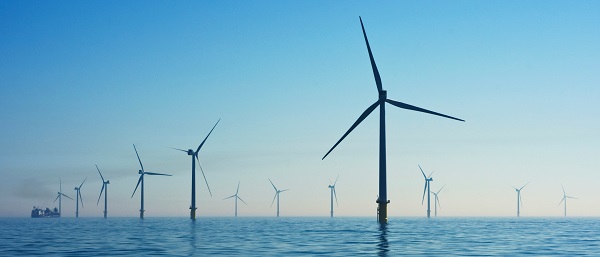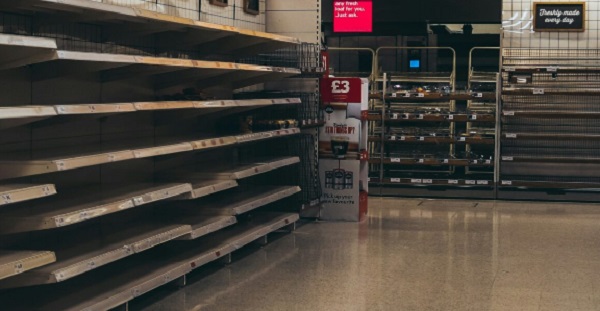Alberta
Red Deer South MLA lambastes Premier Kenney for weighing in on the race to replace him

Article submitted by Red Deer South MLA Jason Stephan
Kenney, the time for you to be quiet is now
When you are a departing leader of a political party, one of your responsibilities is to build unity. One way of doing so is to stay out of the leadership race to replace you. Jason Kenney promised he was not going to be a “color commentator” in the race, and then proceeded to become one. Kenney misrepresented a platform commitment of Danielle Smith —a leading candidate—sowing division and creating disunity.
While misrepresenting the ideas of others and then attacking the straw men manufactured out of the misrepresentation may be standard practice in a junior high school debate, it’s dishonest and disrespectful.
Kenney called the Alberta Sovereignty Act “nuts” and “nuttier than a squirrel turd”. Is that going to produce unity? In his leadership review, when he called those who disagreed with him “bugs”, “kooks” and “lunatics”, how did that work out
for him?
Kenney says the Sovereignty Act would make Alberta the “laughingstock” of Canada. Perhaps we already are.
When Albertans held a provincial referendum and rejected equalization, who did Trudeau appoint as environment minister? He chose Steven Guilbeault, the Greenpeace activist, arrested for climbing on Ralph Klein’s roof when he was away, frightening Klein’s wife who was home alone. I bet Trudeau thought that was funny.
What does Trudeau do with Kenney’s sternly worded letters? Perhaps they are trophies he hangs on the walls.
The premier of Quebec said one of his favorite things about Canada is equalization, so what progress has Kenney made on equalization? None.
The Sovereignty Act seeks to do what Quebec does. Is Quebec a laughingstock?
Kenney says the Sovereignty Act would be a “body blow” to Alberta jobs and the economy and “draw massive investment away”. Isn’t that going to be the result of Trudeau’s new “discussion paper?”
This paper was released in August with a submission deadline in September. It proposes either a new cap-and-trade or carbon tax only on oil and gas development, disproportionately punishing Alberta while sparing Quebec and other provinces that Trudeau bribes for power.
Kenney should consider stopping his straw man attacks and start focusing on Ottawa where he came from. No straw man is required as Ottawa is already responsible for driving away hundreds of billions in investment out of Alberta and thousands of Alberta jobs with it along with more “body blows” to come if we get this imminent new cap and trade or new carbon tax imposed on our natural resources.
Is Kenney working on his latest sternly worded letter?
But wait, under section 92A of Canada’s constitution, isn’t Alberta supposed to have jurisdiction over the development of our natural resources? Isn’t Trudeau again seeking to do indirectly what he cannot do directly? Isn’t this a sneaky,
backdoor, constitutional trojan horse? Isn’t this what the Sovereignty Act is intended to address, to assert constitutional boundaries that Ottawa continually seeks to circumvent, trespass, attack and undermine? When Ottawa abuses its
power, isn’t the Sovereignty Act to be a check and balance?
Yes, a good idea, improperly applied can be detrimental, and if that is the version that Kenney wants to manufacture, attack, and fearmonger, that is his choice.
Properly applied the Sovereignty Act will benefit Alberta, counteracting the commercial uncertainty and chaos from Ottawa by asserting the constitutional boundaries that Ottawa habitually disrespects, seeking to undermine and intrude into
Alberta’s constitutional jurisdiction to develop its oil and gas resources.
Kenney says the Sovereignty Act does not respect the rule of law.
Properly applied the Sovereignty Act supports the rule of law as it asserts Alberta’s constitutional jurisdictions and resists abuses of power emanating out of Ottawa.
Kenney says he “isn’t really following the leadership race”. He is.
Kenney started saying he does not know which candidates are supporting the Sovereignty Act. He knows.
He also knew the deadline for members to participate in the leadership race had ended the day before he chose to improperly misrepresent a platform policy of a leading candidate who is not part of his inner circle.
Great leaders speak the truth in love inspiring the best in those they serve. They do not fearmonger, they do not call names, they do not misrepresent others’ ideas and then attack the straw men they manufactured with their misrepresentations.
It is disappointing to see Kenney failing in his responsibility to build unity. I have faith his successor will do better.
Alberta
The Canadian Energy Centre’s biggest stories of 2025

From the Canadian Energy Centre
Canada’s energy landscape changed significantly in 2025, with mounting U.S. economic pressures reinforcing the central role oil and gas can play in safeguarding the country’s independence.
Here are the Canadian Energy Centre’s top five most-viewed stories of the year.
5. Alberta’s massive oil and gas reserves keep growing – here’s why

The Northern Lights, aurora borealis, make an appearance over pumpjacks near Cremona, Alta., Thursday, Oct. 10, 2024. CP Images photo
Analysis commissioned this spring by the Alberta Energy Regulator increased the province’s natural gas reserves by more than 400 per cent, bumping Canada into the global top 10.
Even with record production, Alberta’s oil reserves – already fourth in the world – also increased by seven billion barrels.
According to McDaniel & Associates, which conducted the report, these reserves are likely to become increasingly important as global demand continues to rise and there is limited production growth from other sources, including the United States.
4. Canada’s pipeline builders ready to get to work
Canada could be on the cusp of a “golden age” for building major energy projects, said Kevin O’Donnell, executive director of the Mississauga, Ont.-based Pipe Line Contractors Association of Canada.
That eagerness is shared by the Edmonton-based Progressive Contractors Association of Canada (PCA), which launched a “Let’s Get Building” advocacy campaign urging all Canadian politicians to focus on getting major projects built.
“The sooner these nation-building projects get underway, the sooner Canadians reap the rewards through new trading partnerships, good jobs and a more stable economy,” said PCA chief executive Paul de Jong.
3. New Canadian oil and gas pipelines a $38 billion missed opportunity, says Montreal Economic Institute

Steel pipe in storage for the Trans Mountain Pipeline expansion in 2022. Photo courtesy Trans Mountain Corporation
In March, a report by the Montreal Economic Institute (MEI) underscored the economic opportunity of Canada building new pipeline export capacity.
MEI found that if the proposed Energy East and Gazoduq/GNL Quebec projects had been built, Canada would have been able to export $38 billion worth of oil and gas to non-U.S. destinations in 2024.
“We would be able to have more prosperity for Canada, more revenue for governments because they collect royalties that go to government programs,” said MEI senior policy analyst Gabriel Giguère.
“I believe everybody’s winning with these kinds of infrastructure projects.”
2. Keyera ‘Canadianizes’ natural gas liquids with $5.15 billion acquisition

Keyera Corp.’s natural gas liquids facilities in Fort Saskatchewan, Alta. Photo courtesy Keyera Corp.
In June, Keyera Corp. announced a $5.15 billion deal to acquire the majority of Plains American Pipelines LLP’s Canadian natural gas liquids (NGL) business, creating a cross-Canada NGL corridor that includes a storage hub in Sarnia, Ontario.
The acquisition will connect NGLs from the growing Montney and Duvernay plays in Alberta and B.C. to markets in central Canada and the eastern U.S. seaboard.
“Having a Canadian source for natural gas would be our preference,” said Sarnia mayor Mike Bradley.
“We see Keyera’s acquisition as strengthening our region as an energy hub.”
1. Explained: Why Canadian oil is so important to the United States

Enbridge’s Cheecham Terminal near Fort McMurray, Alberta is a key oil storage hub that moves light and heavy crude along the Enbridge network. Photo courtesy Enbridge
The United States has become the world’s largest oil producer, but its reliance on oil imports from Canada has never been higher.
Many refineries in the United States are specifically designed to process heavy oil, primarily in the U.S. Midwest and U.S. Gulf Coast.
According to the Alberta Petroleum Marketing Commission, the top five U.S. refineries running the most Alberta crude are:
- Marathon Petroleum, Robinson, Illinois (100% Alberta crude)
- Exxon Mobil, Joliet, Illinois (96% Alberta crude)
- CHS Inc., Laurel, Montana (95% Alberta crude)
- Phillips 66, Billings, Montana (92% Alberta crude)
- Citgo, Lemont, Illinois (78% Alberta crude)
Alberta
Alberta project would be “the biggest carbon capture and storage project in the world”

Pathways Alliance CEO Kendall Dilling is interviewed at the World Petroleum Congress in Calgary, Monday, Sept. 18, 2023.THE CANADIAN PRESS/Jeff McIntosh
From Resource Works
Carbon capture gives biggest bang for carbon tax buck CCS much cheaper than fuel switching: report
Canada’s climate change strategy is now joined at the hip to a pipeline. Two pipelines, actually — one for oil, one for carbon dioxide.
The MOU signed between Ottawa and Alberta two weeks ago ties a new oil pipeline to the Pathways Alliance, which includes what has been billed as the largest carbon capture proposal in the world.
One cannot proceed without the other. It’s quite possible neither will proceed.
The timing for multi-billion dollar carbon capture projects in general may be off, given the retreat we are now seeing from industry and government on decarbonization, especially in the U.S., our biggest energy customer and competitor.
But if the public, industry and our governments still think getting Canada’s GHG emissions down is a priority, decarbonizing Alberta oil, gas and heavy industry through CCS promises to be the most cost-effective technology approach.
New modelling by Clean Prosperity, a climate policy organization, finds large-scale carbon capture gets the biggest bang for the carbon tax buck.
Which makes sense. If oil and gas production in Alberta is Canada’s single largest emitter of CO2 and methane, it stands to reason that methane abatement and sequestering CO2 from oil and gas production is where the biggest gains are to be had.
A number of CCS projects are already in operation in Alberta, including Shell’s Quest project, which captures about 1 million tonnes of CO2 annually from the Scotford upgrader.
What is CO2 worth?
Clean Prosperity estimates industrial carbon pricing of $130 to $150 per tonne in Alberta and CCS could result in $90 billion in investment and 70 megatons (MT) annually of GHG abatement or sequestration. The lion’s share of that would come from CCS.
To put that in perspective, 70 MT is 10% of Canada’s total GHG emissions (694 MT).
The report cautions that these estimates are “hypothetical” and gives no timelines.
All of the main policy tools recommended by Clean Prosperity to achieve these GHG reductions are contained in the Ottawa-Alberta MOU.
One important policy in the MOU includes enhanced oil recovery (EOR), in which CO2 is injected into older conventional oil wells to increase output. While this increases oil production, it also sequesters large amounts of CO2.
Under Trudeau era policies, EOR was excluded from federal CCS tax credits. The MOU extends credits and other incentives to EOR, which improves the value proposition for carbon capture.
Under the MOU, Alberta agrees to raise its industrial carbon pricing from the current $95 per tonne to a minimum of $130 per tonne under its TIER system (Technology Innovation and Emission Reduction).
The biggest bang for the buck
Using a price of $130 to $150 per tonne, Clean Prosperity looked at two main pathways to GHG reductions: fuel switching in the power sector and CCS.
Fuel switching would involve replacing natural gas power generation with renewables, nuclear power, renewable natural gas or hydrogen.
“We calculated that fuel switching is more expensive,” Brendan Frank, director of policy and strategy for Clean Prosperity, told me.
Achieving the same GHG reductions through fuel switching would require industrial carbon prices of $300 to $1,000 per tonne, Frank said.
Clean Prosperity looked at five big sectoral emitters: oil and gas extraction, chemical manufacturing, pipeline transportation, petroleum refining, and cement manufacturing.
“We find that CCUS represents the largest opportunity for meaningful, cost-effective emissions reductions across five sectors,” the report states.

Fuel switching requires higher carbon prices than CCUS.
Measures like energy efficiency and methane abatement are included in Clean Prosperity’s calculations, but again CCS takes the biggest bite out of Alberta’s GHGs.
“Efficiency and (methane) abatement are a portion of it, but it’s a fairly small slice,” Frank said. “The overwhelming majority of it is in carbon capture.”

From left, Alberta Minister of Energy Marg McCuaig-Boyd, Shell Canada President Lorraine Mitchelmore, CEO of Royal Dutch Shell Ben van Beurden, Marathon Oil Executive Brian Maynard, Shell ER Manager, Stephen Velthuizen, and British High Commissioner to Canada Howard Drake open the valve to the Quest carbon capture and storage facility in Fort Saskatchewan Alta, on Friday November 6, 2015. Quest is designed to capture and safely store more than one million tonnes of CO2 each year an equivalent to the emissions from about 250,000 cars. THE CANADIAN PRESS/Jason Franson
Credit where credit is due
Setting an industrial carbon price is one thing. Putting it into effect through a workable carbon credit market is another.
“A high headline price is meaningless without higher credit prices,” the report states.
“TIER credit prices have declined steadily since 2023 and traded below $20 per tonne as of November 2025. With credit prices this low, the $95 per tonne headline price has a negligible effect on investment decisions and carbon markets will not drive CCUS deployment or fuel switching.”
Clean Prosperity recommends a kind of government-backstopped insurance mechanism guaranteeing carbon credit prices, which could otherwise be vulnerable to political and market vagaries.
Specifically, it recommends carbon contracts for difference (CCfD).
“A straight-forward way to think about it is insurance,” Frank explains.
Carbon credit prices are vulnerable to risks, including “stroke-of-pen risks,” in which governments change or cancel price schedules. There are also market risks.
CCfDs are contractual agreements between the private sector and government that guarantees a specific credit value over a specified time period.
“The private actor basically has insurance that the credits they’ll generate, as a result of making whatever low-carbon investment they’re after, will get a certain amount of revenue,” Frank said. “That certainty is enough to, in our view, unlock a lot of these projects.”
From the perspective of Canadian CCS equipment manufacturers like Vancouver’s Svante, there is one policy piece still missing from the MOU: eligibility for the Clean Technology Manufacturing (CTM) Investment tax credit.
“Carbon capture was left out of that,” said Svante co-founder Brett Henkel said.
Svante recently built a major manufacturing plant in Burnaby for its carbon capture filters and machines, with many of its prospective customers expected to be in the U.S.
The $20 billion Pathways project could be a huge boon for Canadian companies like Svante and Calgary’s Entropy. But there is fear Canadian CCS equipment manufacturers could be shut out of the project.
“If the oil sands companies put out for a bid all this equipment that’s needed, it is highly likely that a lot of that equipment is sourced outside of Canada, because the support for Canadian manufacturing is not there,” Henkel said.
Henkel hopes to see CCS manufacturing added to the eligibility for the CTM investment tax credit.
“To really build this eco-system in Canada and to support the Pathways Alliance project, we need that amendment to happen.”
Resource Works News
-

 Business2 days ago
Business2 days agoDark clouds loom over Canada’s economy in 2026
-

 Business2 days ago
Business2 days agoThe Real Reason Canada’s Health Care System Is Failing
-

 Business2 days ago
Business2 days agoFederal funds FROZEN after massive fraud uncovered: Trump cuts off Minnesota child care money
-

 Addictions2 days ago
Addictions2 days agoCoffee, Nicotine, and the Politics of Acceptable Addiction
-

 Opinion1 day ago
Opinion1 day agoGlobally, 2025 had one of the lowest annual death rates from extreme weather in history
-

 International16 hours ago
International16 hours agoTrump confirms first American land strike against Venezuelan narco networks
-

 Business16 hours ago
Business16 hours agoHow convenient: Minnesota day care reports break-in, records gone
-

 Business15 hours ago
Business15 hours agoThe great policy challenge for governments in Canada in 2026










